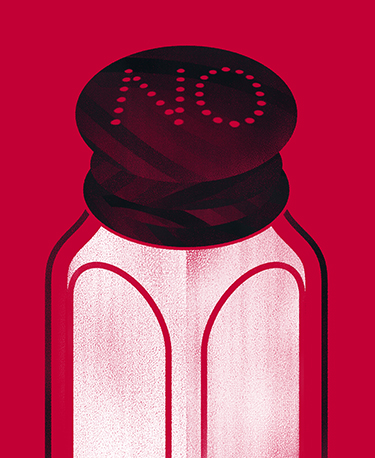Discoveries
Licking the Salt Habit
Oct 25, 2017 Cedars-Sinai Staff
How Virtual Reality Could Improve Your Diet

Illustration: Giulio Bonasera
Virtual reality has expanded into many areas in recent years, moving well beyond its original gaming applications. At Cedars-Sinai, researchers are envisioning a new use for the technology: protecting people from high blood pressure.
Because African-Americans are especially at risk, Cedars-Sinai teamed up with the Black Nurse Association’s local Council of Black Nurses to launch a feasibility study in West Adams, a historically African-American neighborhood in Los Angeles, to try to make a difference with a novel educational approach.
The program, called the Sodium Healthy Living Project (So-Help), specifically aims to reduce people’s intake of salt, a leading culprit in high blood pressure, which afflicts 40 percent of African-Americans.
“High blood pressure is a silent killer, leading to kidney and heart problems,” says Bernice Coleman, PhD, a scientist and acute care nurse practitioner in the Department of Nursing Research and the Geri and Richard Brawerman Nursing Institute, and co-principal investigator of the study. "Identifying it early is key."
Sixty participants received Fitbits, digital blood pressure cuffs, the MyFitnessPal app, and virtual reality goggles, and met weekly at the Holman United Methodist Church for dinner, health education, and data collection from their new devices. They learned about nutrition labels, the role of salt in their diets, and how to interpret blood pressure and cholesterol numbers.
In the virtual reality component, parishioners fly through their own hearts, brains, kidneys, and blood vessels in immersive 3-D for an eye-opening view of the damaging effects of salt on their bodies.


